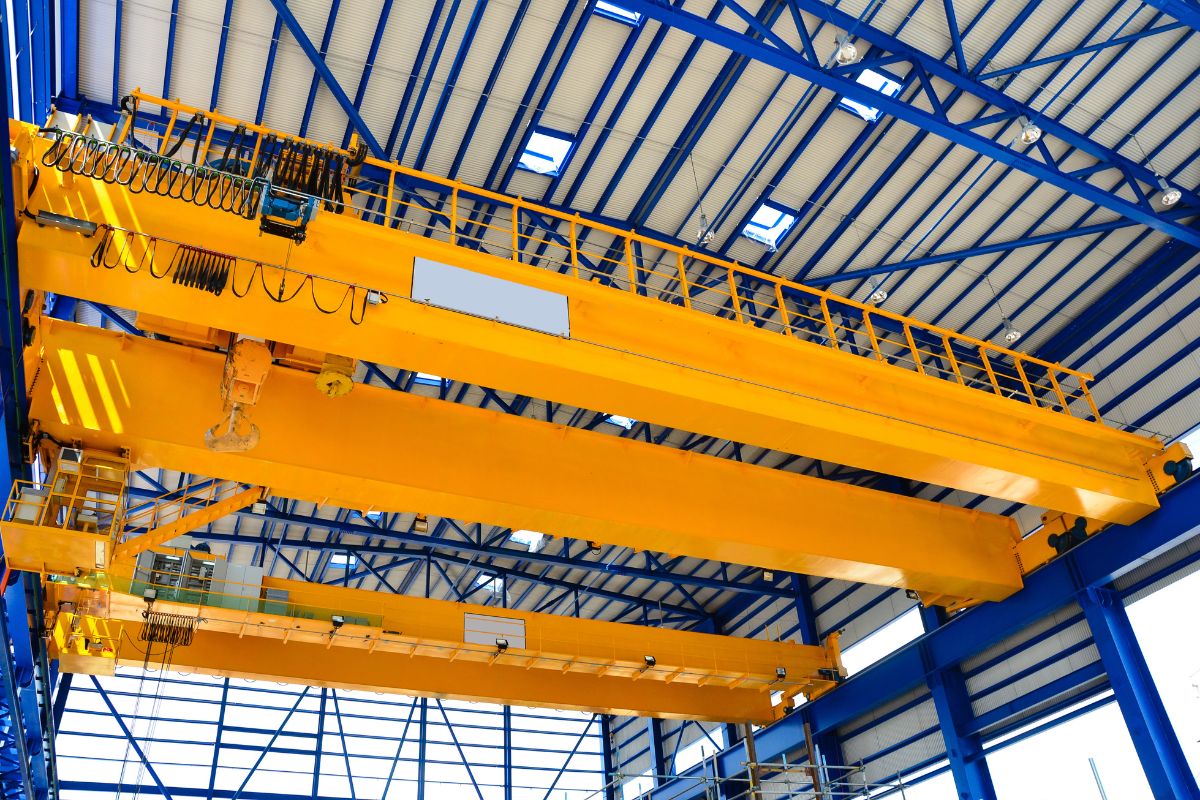Any industrial sector needs overhead cranes to function efficiently in various operations. These machines enable safer and more efficient transfer of heavy materials which results in faster production rates.
But lack of maintenance can turn into danger for overhead cranes and cause damage in the production cost and workplace safety accidents. This guide, therefore, covers all that you need to know about overhead crane maintenance so that your machines may maintain utmost efficiency and safety.
Importance of Overhead Crane Maintenance
Maintenance of overhead cranes should be done in a periodic nature to guarantee:
- Safety Compliance – Maintenance procedures ensure that accidents do not occur, thereby upholding the requirement of safety in the workplace.
- Operational Efficiency – Good maintenance promotes the operation of the cranes with minimum downtime in order to maximize productivity.
- Cost Savings – Due to reduced breakdowns, cost savings are seen whenever through maintenance schedules and a longer life for cranes.
- Legal Considerations– Non-compliance with Australian Safety Standards (AS 2550.1 & AS 1418) may result in serious legal implications.
Key Components That Require Regular Maintenance
The following essential components must be an overhead crane maintenance is to continue operating at peak efficiency:
- Hoist and Trolley System: Usually inspect hoist and trolley parts for wear and tear.
- Wire Ropes and Chains: Fraying from stress, corrosion, and stretch wear.
- Brakes and Controls: Proper working order and responsive are properties of brakes and controls.
- Runways and Rails: Look for alignment, remove obstructions, and look for wear.
- Electrical Systems: A test of electrical wiring, control panels, and overload protection.
Recommended Overhead Crane Maintenance Checklist
Daily Maintenance
- Perform a visual inspection for visible damages or loose components.
- Check hooks, slings, and chains for wear and deformation.
- Lubricate moving parts per manufacturer’s instructions.
Weekly Maintenance
- Inspect wire ropes and load chains for damage or excessive wear.
- Test limit switches to ensure they function properly.
- Check the working condition of the brakes.
Monthly Maintenance
- Check the electrical system for loose connections or wiring faults.
- Test emergency stop and other safety devices.
- Alignment-check the crane and rail system.
Annual Maintenance
- Detailed inspection by a certified technician.
- Load test for crane lifting capacity.
- Replace worn parts to avoid future breakdowns.
Common Problems with Overhead Cranes and Solutions
- Unusual noises or vibrations: Misalignment of components or mechanical wear.
- Friction brakes will continue working insufficiently because brake pads have become worn out.
- Insufficient ventilation of the work area should be remedied while checking for electrical infrastructure faults.
- An examination for beams should identify stress signs along with cracks in load-bearing parts.
Best Practices for Overhead Crane Maintenance
- Implement a Preventative Maintenance Schedule – Regular servicing helps curb major breakdowns.
- Proper Training of Workers on Safe Usage – Proper handling prevents unnecessary wear and tear.
- Keep Detailed Maintenance Records – Documentation assists in tracking performance and compliance.
- Employ Certified Technicians for Major Repairs – Professionals ensure accurate troubleshooting and repairs.
Compliance with Safety Standards and Regulations
- The Australian safety standards dictate how overhead cranes must operate in the country.
- AS 2550.1 – General requirements for the safe use of lifting equipment.
- AS 1418 specifies all outline requirements for crane design testing and maintenance procedures. Nonadherence to these criteria may result in fines and either have equipment equipment shutdowns or trigger legal consequences.
Common Overhead Crane Problems and Solutions
Knowledge of these various problems and how to solve them is an important factor for maintaining the effective condition of overhead equipment. Here are several possible occurrences:
- Unusual Noises or Vibrations: Misalignment or other mechanical-wear problems may be causing these disturbances. It is important to take remedial action immediately by checking all moving parts and realigning them to prevent any further damage.
- Worn-Out Brakes: Friction brakes dissipate energy over time as the brake pads wear out. Regular inspection and replacement of these pads will avoid junctures and allow for smooth operation.
- Electrical Failures: Faulty wiring or an elective greasy problem may cause the failure of electrical components. Maintain good ventilation in the work area and inspect the electrical system regularly to avoid fires or power loss.
- Load-Bearing Cracks: Stress fractures due to the passage of time can be sustained by beams and load-bearing members. Regular inspection of these components, with replacement at the slightest sign of cracking or stress, is highly recommended.
Training of workers is one of the maintenance bases for overhead cranes
Training of crane operators and maintenance personnel is a must. The crane will be less subject to wear and tear through the improper use of a well-trained operator, which will extend the life of the machine. Training in safety also assists the operators in being able to identify and correct minor problems before they develop into serious issues.
Proactive Maintenance: A Good Investment
A proactive maintenance schedule, strictly enforced from the time of purchase, will help mitigate not only the possibility of crane failure but also the profitability of the business.
Maintenance guarantees that cranes will be in a constant operative state for production, and thus any shutdowns due to unexpected breakdowns will cost time and money in the longer perspective.
If maintenance is a priority for businesses, they will not only adhere to regulatory requirements but also increase crane longevity while enhancing safety and operational efficiency.
Factors in Selecting the Right Maintenance Service Provider
The selection of a maintenance service provider for essential tasks must priorities essential points such as following details: Certification along with experience should be present among the service provider’s technicians.
Emergency services provided by the best contractors operate day and night to avoid equipment shutdowns. Keeping maintenance service providers must use authentic parts to achieve both equipment durability and operational safety.
Conclusion
The maintenance of overhead cranes plays an essential role to ensure operational efficiency as well as guard worker safety and meet all necessary regulatory standards.
Customers can achieve longer crane operation time while keeping equipment offline at a minimum by scheduling maintenance proactively and fixing faults quickly. Crane maintenance from certified professional services ensures optimal performance and safety standards.
















